#carlos diegues
Text


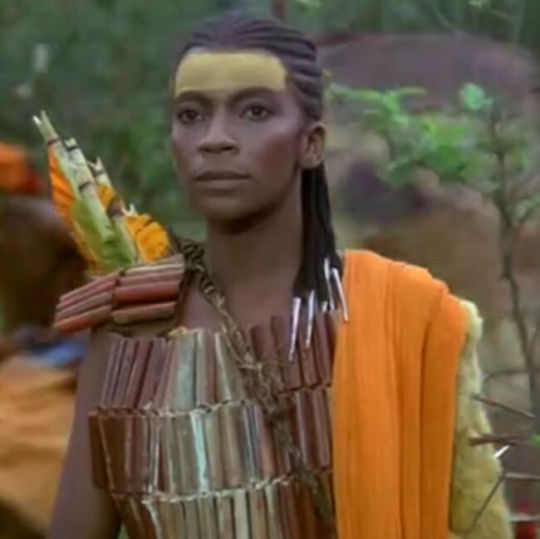

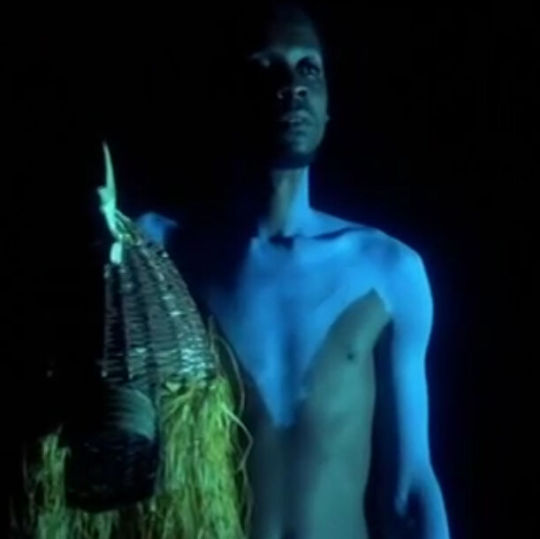




quilombo, 1984.
#quilombo#filmes nacionais#brazil#zeze motta#tony tornado#antonio pitanga#carlos diegues#zumbi#zumbi dos palmares#ganga zumba#grande otelo#antonio pompeo
11 notes
·
View notes
Text

Films Watched in 2024:
15. Dias Melhores Virão/Better Days Ahead (1989) - Dir. Carlos Diegues
#Dias Melhores Virão#Better Days Ahead#Carlos Diegues#Marília Pêra#Paulo José#Rita Lee#José Wilker#Zezé Motta#Marilu Bueno#Antonio Pedro#Aurora Miranda#cinema brasileiro#Brazillian Cinema#Films Watched in 2024#My Post
1 note
·
View note
Photo

Bye Bye Brazil (1980)
Zaira Zambelli and Fabio Junior
1 note
·
View note
Text


Ganga Zumba (1963, Carlos Diegues)
0 notes
Text





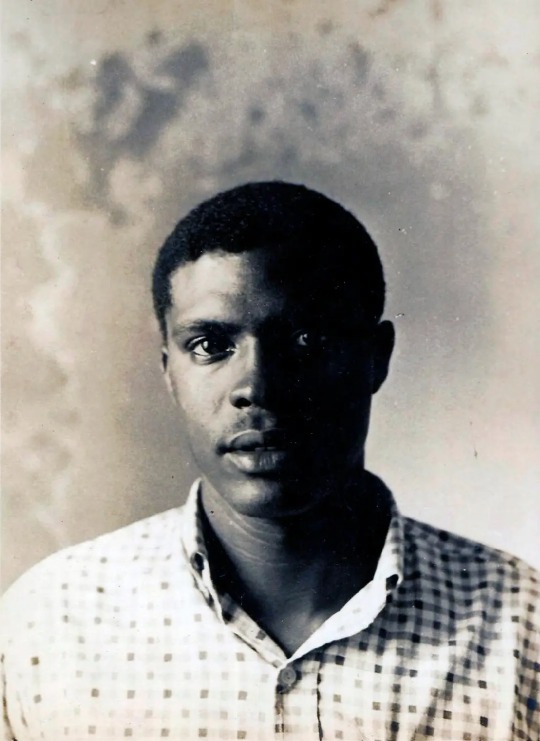
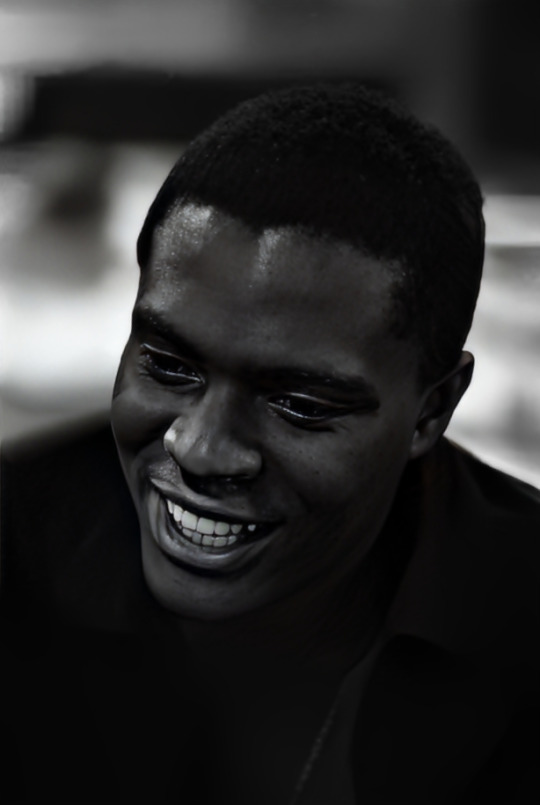
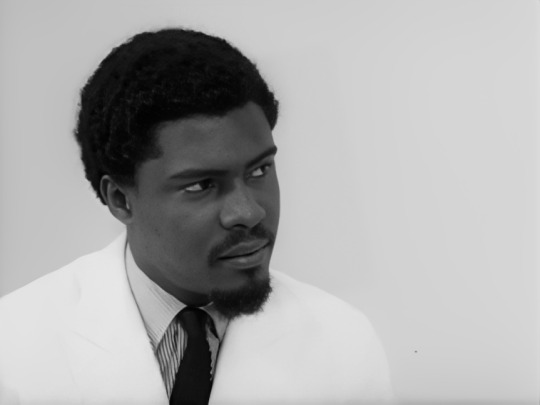
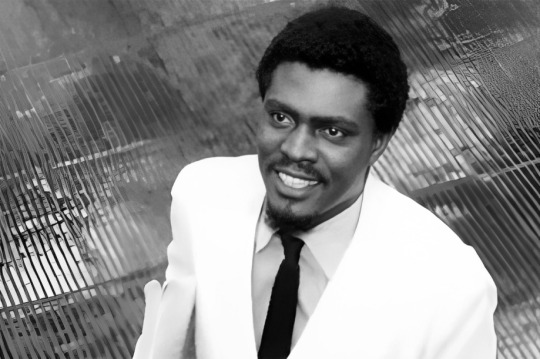
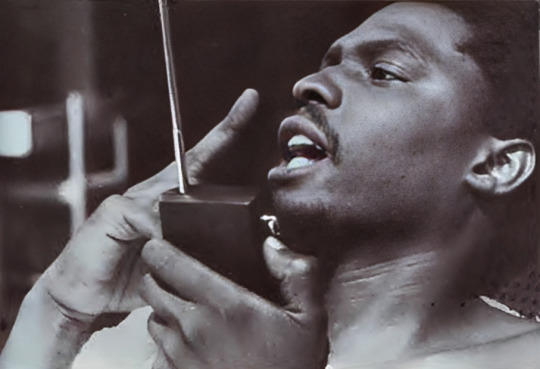

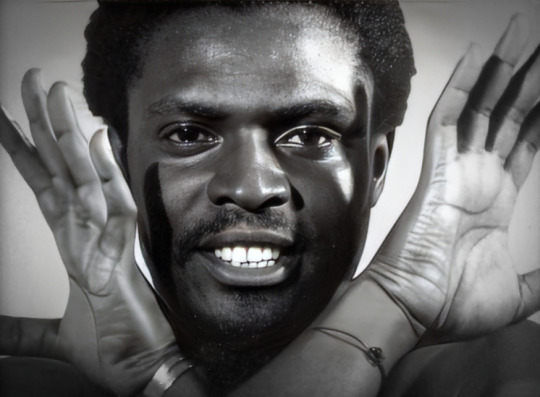




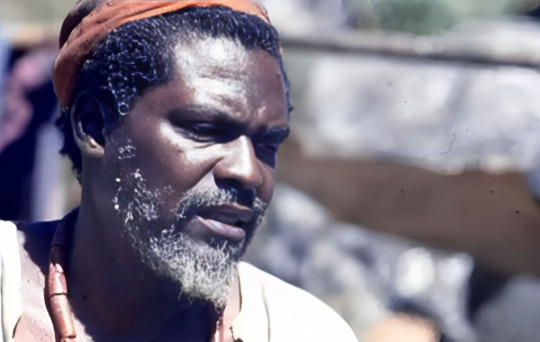





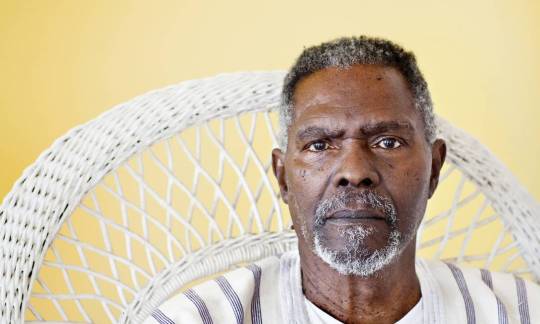
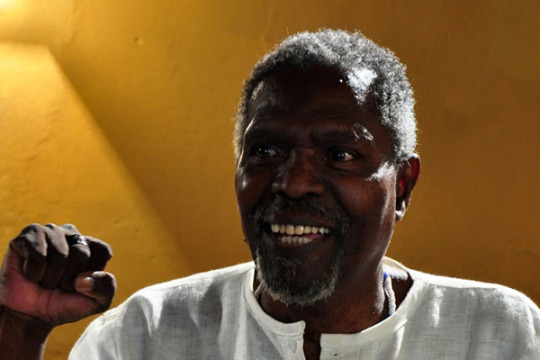
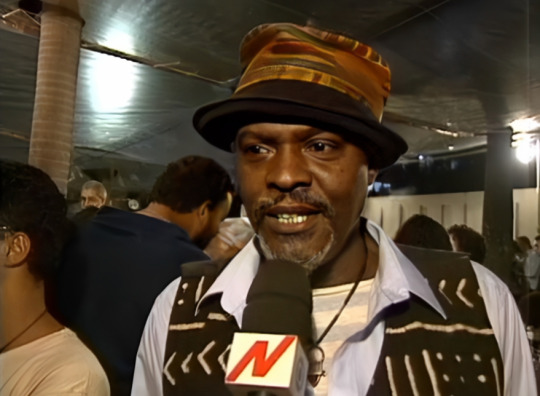




Ele foi o primeiro ator negro protagonista de uma novela (Vidas em Conflito, na extinta TV Excelsior, em 1969). Ele foi o primeiro modelo negro brasileiro a desfilar para uma grife de alta costura. Também foi o fundador do Centro Afro Carioca de Cinema, em 2007. E, embora não seja o primeiro cineasta negro do país, é considerado o pai do cinema negro brasileiro.
Zózimo Bulbul (1937-2013) foi ator, diretor, roteirista e produtor. E a partir de seu curta-metragem vanguardista "Alma no olho" (1974), construiu uma carreira firmemente enraizada na cultura negra do Brasil, culminando no fundamental documentário "Abolição" (1988), que aborda questões ainda hoje espinhosas e não resolvidas sobre a escravidão, sua pretensa abolição e a situação do negro no Brasil durante os 100 anos transcorridos desde a assinatura da Lei Áurea.
Como ator de cinema, trabalhou com importantes cineastas do Cinema Novo nos anos 1960 e 1970, bem como em algumas produções internacionais. São destaques na sua filmografia: "Cinco vezes favela" (1962, episódio "Pedreira de São Diogo", dirigido por Leon Hirszman), "Ganga Zumba" (1963, de Carlos Diegues), "Terra em transe" (1967, de Glauber Rocha), "Compasso de espera" (1969/1973, único filme dirigido pelo dramaturgo Antunes Filho), "A deusa negra" (1979, do nigeriano Ola Balogun), "Quilombo" (1984, também de Carlos Diegues) e "Filhas do vento" (2004, de Joel Zito Araújo). Em um de seus últimos trabalhos no cinema, ele interpretou João Cândido, o "Almirante Negro", no curta-metragem "O papel e o mar" (2010), de Luiz Antonio Pilar.
Zózimo Bulbul é nome fundamental da história do cinema, da arte e da cultura brasileiros, e merecia ter tido muito mais reconhecimento em vida. É um nome a ser muito mais conhecido, lembrado e celebrado.
Aplausos, Zózimo Bulbul!
#zozimo bulbul#cinema#tv#tv brasileira#cinema brasileiro#cinema negro#arte brasileira#cultura brasileira#novelas#elenco brasileiro#dramaturgia brasileira#atores brasileiros#atores negros#cineastas negros#cineastas#centro afro carioca de cinema#cultura negra#cultura afrobrasileira#arte negra#movimento negro
2 notes
·
View notes
Text
2 notes
·
View notes
Note
for the film ask: 1, 10, 11, 15, 21, 71
1. Favorite action film?
"A Touch of Zen" by King Hu
"New Dragon Gate Inn" by Raymond Lee
"Hero" & "House of Flying Daggers" by Yimou Zhang
"Crouching Tiger, Hidden Dragon" by Ang Lee
10. Favorite animated movie?
Oh, too many.
"Persepolis" by Vincent Paronnaud and Marjane Satrapi
"The Triplets of Belleville" by Sylvain Chomet
"Waltz with Bashir" by Ari Folman
"Millennium Actress" and "Perfect Blue" by Satoshi Kon
"The Red Turtle" by Michaël Dudok de Wit
"Josep" by Aurel
"Thumbelina" by Lotte Reiniger
"Chico & Rita" by Tono Errando, Fernando Trueba and Javier Mariscal
"The Secret of Kells" by Tomm Moore
"The Swallows of Kabul" by Zabou Breitman and Eléa Gobé Mévellec
"Tale of Tales" by Yuri Norstein
"Belladonna of Sadness" by Eiichi Yamamoto
"Metropolis" by Rintaro
"Miss Hokusai" by Hinako Sugiura
11. Favorite musical?
Oh, boy. Musicals give me life so the list is gonna be long.
Obviously, you'll often hear me singing the classics ('cause I adore them wholeheartedly):
"Fiddler on the Roof"
"My Fair Lady"
"Victor/Victoria"
"Cabaret"
"All About Jazz"
"West Side Story"
"Oliver!"
"A Star Is Born"
"Singin’ in the Rain"
"Young Girls of Rochefort"
"Umbrellas of Cherbourg"
but I also love:
"8 women" by François Ozon
"Fado: The Story of a Singer" by Perdigão Queiroga
"Victimas del Pecado" by Emilio Fernandez
"Alla en el Rancho Grande" by Fernando de Fuentes
"Tangos, the Exile of Gardel" by Fernando Solanas
"Blood Wedding" by Carlos Saura
"El Gran Casino" by Luis Buñuel
"Princess Raccoon" by Seijun Suzuki
"Le Million" by René Clair
"Sholay" by Ramesh Sippy
"Perhaps Love" by Peter Chan
"Orfeu" by Carlos Diegues
"Cinderella" by Nadezhda Kosheverova & Mikhail Shapiro
"The Congress Dances" by Erik Charell
"Fatmah" by Umm Kulthum
"The Happiness of the Katakuris" by Takashi Miike
"Black Orpheus" by Marcel Camus
"Where Do We Go Now?" by Nadine Labaki
"Zouzou" by Marc Allégret
"Ay Carmela!" by Carlos Saura
"Singing Lovebirds" by Masahiro Makino
"French Cancan" by Jean Renoir
"Days and Nights" by Henry Barakat
"Window Shopping" by Chantal Akerman
"No One Knows About Persian Cats" by Bahman Ghobadi
"A Good Lad" by Boris Barnet
"Mother India" by Mehboob Khan
"The Beloved" by Christophe Honoré
"Opera Jawa" by Garin Nugroho
"Same Old Song" by Alain Resnais
"Karmen Gei" by Joseph Gaï Ramaka
"La France" by Serge Bozon
"Destiny" by Youssef Chahine
"Hipsters by Valery Todorovsky
"Las Cosas del Querer" by Jaime Chávarri
"My voice" by Flora Gomes
"Black Cat, White Cat" by Emir Kusturica
15. Favorite chick flick?
I have beef with the term "chick flick," but "The Devil Wears Prada" will do, I guess. Also, "Breakfast at Tiffany's" and "Mamma Mia."
(Does "Thelma and Louise" even count as a chick flick? If yes, that is my favorite one.)
21. Favorite kids movie?
"Inside Out" by Pete Docter
71. A move that made you ache for love.
"In the mood for love" by Wong Kar-Wai
"Brief Encounter" by David Lean
among others.
5 notes
·
View notes
Video
vimeo
Bye Bye Brasil - Completo from Emerson Loverra on Vimeo.
Brasil 1979 - Sinopse: Salomé, Lorde Cigano e Andorinha são três artistas mambembes que cruzam o país com a Caravana Rolidei, fazendo espetáculos para o setor mais humilde da população brasileira e que ainda não tem acesso à televisão. A eles se juntam o sanfoneiro Ciço e sua esposa, Dasdô, com os quais a Caravana cruza a Amazônia pela rodovia Transamazônica até chegar a Altamira.
Direção: Carlos Diegues Produção: Bruno Barreto
Elenco: José Wilker, Betty Faria, Fábio Jr, Zaira Zambelli, Jofre Soares entre outros.
0 notes
Text
Viewing Response 2: Welcome to the Jungle II
There are two different worlds created in the two different productions of the story of Orpheus. In Marcel Camus' Orfeu Negro, Rio de Janeiro is portrayed as a lively, romanticized, and culture filled city where black culture is admirable. This plays into the romance between Orpheus and Eurydice which follows the same structure and is highlighted by the same mood of the original Greek myth. The second production of 1999, titled Orfeu, directed by Carlos Diegues, is a film brutally grounded in reality, only showing the negative sides of Rio such as slums and gang violence. What Myrian Sepúlveda dos Santos argues in her "Black Orpheus and the Merging of Two Brazilian Nations", is that the nation of Brazil and specifically, the city of Rio de Janeiro is not defined by cultural identity, pertaining to the black identity. Sepúlveda dos Santos argues that the black Brazilian identity is a dichotomy, characterized by negative economic, industrial, and social consequences as well as lively, romantic expressive culture. An example of how Camus' film is embodied by one side of this dichotomy is the sequence from minute 27:40 to minute 33:00. This sequence begins with Orpheus playing guitar and singing out his feelings for Eurydice, which then continues to him explaining the Greek myth to Eurydice while searching for a kiss, and finally the two share I nice moment while watching the sun set. Engaging Cinema refers to this type of lighting as the "magic hour" which softens the whole scene and adds to the romance. A more romantic six and a half minutes without the actual act of kissing could not be recreated in a film. Everything lends it self to the development of their romance in this sequence: the wind and open set, Orpheus longing for intimacy, Eurydice's white dress symbolizing her chastity, and the grand sunset. If there is one sequence that highlights the one half of the dichotomy between the two productions of this ancient story, it's this one.

1 note
·
View note
Text
Filme "Deus é brasileiro" - breve ensaio crítico
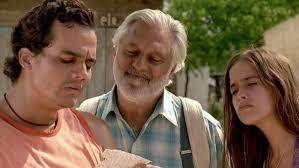
Direção: Carlos Diegues. Produção: Renata de Almeida Magalhães. Roteiro: Carlos Diegues e João Ubaldo Ribeiro, com a colaboração de João Emanuel Carneiro e Renata de Almeida Magalhães. Com: Antônio Fagundes, Wagner Moura, Paloma Duarte, Castrinho, Stephan Nercessian, Bruce Gomlevsky e Thiago Faria. Participação especial de Susana Werner e Toni Garrido. Duração aproximada de 115 min. Livremente inspirado no conto “O santo que não acreditava em Deus”, de João Ubaldo Ribeiro.
O filme “Deus é brasileiro” nos apresenta a história de Taoca, um borracheiro que deve dinheiro a um agiota e se vê atormentado por sonhos devido a essa dívida. Um dia, escondendo-se do agiota em sua canoa, Taoca encontra Deus. Juntos, vão em busca de um homem chamado Quinca das mulas, homem que Deus havia escolhido para ocupar o lugar de santo e substituí-lo enquanto tirava férias nas estrelas. No caminho, encontram Madá, uma jovem solitária, que se encanta com Deus, sem conhecer sua origem divina. Os três percorrem o litoral de Alagoas, passando pelo interior do Tocantins e por Pernambuco à procura de Quinca, até encontrá-lo. No final, uma grande surpresa: Quinca, o escolhido para ser santo, era ateu.
Com uma linguagem popular, Deus é brasileiro trata de questões de identidade nacional, de religiosidade, de conflitos existenciais e problemas sociais, como a prostituição, a fome, a agiotagem, o suicídio, a venda de filhos, entre outros. Mesmo utilizando um tom cômico, o filme provoca uma reflexão sobre esses problemas, mas não se aprofunda nessa reflexão. Deus sempre responde a Taoca que Ele fez tudo certo, o homem é que tomou o rumo errado, portanto a culpa não é Dele de as coisas estarem assim. O que pode se intuir das palavras de Deus é que o homem deve ser o único responsável pelo seu destino e não deve atribuir a culpa pelo seu fracasso a ninguém. A figura de Deus, às vezes, aparece sem piedade, sem amor (os personagens dizem isso a Ele), cético diante dos problemas humanos com os quais se deparam, rabugento e, às vezes, até cínico, sempre criticando Taoca, Madá ou outros personagens. Deus aparece também como presunçoso, esnobe – e isso fica bem claro na cena do casamento, quando o pastor exalta a grandeza de Deus e Ele se autodenomina perfeito.
Deus está cansado de reger a terra, de resolver as coisas, e quer um descanso, mas precisa de alguém que tome o seu lugar. Precisa de um santo e vem procurá-lo no Brasil, pois este é um país muito religioso e nunca teve um santo que o representasse. Sabe-se que o Brasil é um país, até agora, predominantemente católico, mas que possui praticantes de outras religiões, como espíritas e afro-brasileiros, que se denominam católicos, e há um intenso crescimento de outras religiões, como a protestante. Uma parte interessante do filme que apresenta bem a ideia de mistura de religiões é a parte em que Deus, Taoca e Madá chegam a um casamento que parece estar sendo realizado por um pastor evangélico. Logo se encerra a cerimônia religiosa e começa a festa, com danças e bebidas, o que não é aceito no meio evangélico. Mistura de elementos da religião evangélica com elementos não religiosos.
Durante o filme, aspectos da religiosidade dos personagens vão sendo mostrados: Taoca, em seus sonhos, quando perseguido por Baudelaire, encontra segurança nos braços de Nossa Senhora. Madá sempre chama por Nossa Senhora e, quando atingida por um tiro, seu medalhão de Nossa Senhora é que recebe o impacto da bala, sendo salva da morte. Em uma cena, Deus diz a Taoca que são os santos que realizam os milagres.
O filme faz uma crítica, ainda que não aprofundada, à igreja: a irmã de Taoca é uma beata. Taoca sugere a Deus que Ele a escolha para ocupar o posto de santa, diz que ela deve ser uma das únicas virgens talvez do mundo. Deus ri e manda que ele pergunte ao padre Ambrósio, fazendo uma alusão a um suposto relacionamento do padre com a moça.
O que causa a surpresa é a postura assumida por Quinca, o homem escolhido para ser santo: mesmo diante de Deus, vendo-O passar dias e dias em questão de segundos, isso não abala sua convicção. Ele não acreditava em Deus e manteve sua postura. Uma frase interessante que Quinca diz é que Deus deveria ter economizado em belezas da natureza e dado mais comida aos famintos, ao que Deus responde o que diz durante todo o filme: “que Ele fez tudo certo, os homens é que não souberam aproveitar”. Essa frase repetida por Deus durante todo o filme parece um subterfúgio para ocultar o que realmente acontece – Deus não conseguiu cumprir o que sonhou para a humanidade e, cansado de tentar controlar a situação, precisa de alguém que o faça enquanto Ele descansa. Da mesma forma que Deus não cumpriu sua missão com a humanidade, não cumpriu sua missão de encontrar um santo que o substitua. O filme não se aprofunda em suas críticas, apresenta várias passagens sem ligação entre si, sem conexão com a história, e, no fim, a ideia central escapa à atenção – não dá para dizer com certeza do que realmente o filme se dispõe a tratar. Vale a pena conferir por seu roteiro, adaptado da obra de João Ubaldo Ribeiro, pela atuação brilhante de Wagner Moura e pela apresentação
1 note
·
View note
Text
Nélida Piñon, Provocative Brazilian Novelist, Is Dead at 85
Widely regarded as one of her country’s greatest contemporary writers, she was also the first woman elected president of the Brazilian Academy of Letters.

The Brazilian author Nélida Piñon in Madrid in 2019. Although the global reach of her work never matched that of her better-known Latin American contemporaries, her writing found an enthusiastic public outside of Brazil and was translated into some 30 languages.Credit...Zipi/EPA, via Shutterstock
By Ana Ionova
Dec. 27, 2022
Nélida Piñon, a trailblazing Brazilian author whose provocative writing won some of the world’s most prestigious prizes, and who made history when she became the first woman to preside over the country’s literary academy, died on Dec. 17 in Lisbon. She was 85.
Her secretary and longtime friend Karla Vasconcelos da Silva said the cause was complications of emergency surgery that she had undergone after battling stomach cancer.
Ms. Piñon is widely regarded as one of Brazil’s greatest contemporary writers, admired for her masterly use of Portuguese and her playful approach to literary form.
“Literature opened the doors of paradise and, at the same time, of hell to me,” Ms. Piñon told a
Her whimsical use of religious symbolism and her exploration of sexuality and eroticism were considered daring in deeply Catholic Brazil, which was ruled by a repressive military dictatorship until 1985. And her experimentation with the baroque and the surreal set her apart from most other Brazilian writers of her time.
Ms. Piñon wrote more than two dozen books, including the novels “The House of Passion” (1972) and her best-known work, “The Republic of Dreams” (1984), which was inspired by her family’s migration to Brazil from Galicia, an autonomous region of Spain. She also wrote short stories, memoirs, essays and speeches.
From 1996 to 1997, Ms. Piñon was the president of the Brazilian Academy of Letters, a cultural institution that acts as the country’s main authority on the Portuguese language. She was the first woman to hold that position.
“She was a pioneer in so many ways,” said Isabel Vincent, an author and investigative journalist whose friendship with Ms. Piñon spanned four decades. “And she was aware of the sort of trailblazing things that she was doing.”
Portuguese radio station in 2021, referring to the highs and lows of the writing process. “I always lived with intensity. I didn’t shy away from deeply loving the Portuguese language, which is my life’s great purpose.”

Mr. Piñon with the filmmaker Carlos Diegues, center, and the journalist Zuenir Ventura in 2022 at a Brazilian Academy of Letters event. Ms. Piñon was president of the academy from 1996 to 1997.Credit...Mauro Pimentel/Agence France-Presse — Getty Images
Ms. Piñon’s work has won awards at home and abroad, including the prestigious Prince of Asturias Prize for Literature, considered Spain’s equivalent of the Nobel Prize. She is also a two-time winner of Brazil’s top literary award, the Jabuti Prize.
Her writing was first brought to English-speaking readers in the 1970s by Gregory Rabassa, a distinguished translator of Spanish and Portuguese literature who also worked with the likes of Gabriel García Márquez.
Although the global reach of Ms. Piñon’s work never equaled that of better-known Latin American contemporaries like García Márquez, Julio Cortázar, Mario Vargas Llosa or Isabel Allende, her writing found an enthusiastic public outside Brazil and was translated into some 30 languages.
“A stupendous work, literature of a high order,” Publishers Weekly wrote about “The Republic of Dreams” in 1991. “The Amazonian plenitude of Piñon’s imagination puts her in the category of genius.”
Nélida Cuiñas Piñon was born on May 3, 1937, in the Vila Isabel neighborhood of Rio de Janeiro. Her father, Lino Piñón Muíños, a merchant, was a Galician immigrant; her mother, Olivia Carmen Cuíñas Piñón, a homemaker, was born in Brazil to Galician parents.
As a child, Ms. Piñon was a voracious reader, enchanted by the fantasy world of storytelling. She began to write early on, selling her handwritten stories to her father and other family members for a few dollars apiece.
“I wanted to be a writer,” she told the Brazilian newspaper Estadão in 2021. “I don’t know how or why, I just knew I loved the stories. Above all, the impossible narratives and, who knows, even the illogical ones. Because the absence of logic gave the story more power.”
When Ms. Piñon was 10, her family moved to the rural village in Galicia where her father had grown up. Living there for two years, she deepened her ties to her family heritage, which she would later make reference to in her work, frequently writing about the ideas of belonging and ancestry.
After the family returned to Brazil, Ms. Piñon went on to study at the Pontifical Catholic University of Rio de Janeiro, where she earned a degree in journalism. She began her career writing for newspapers and magazines.

“The Republic of Dreams,” published in 1984, was Ms. Piñon’s best-known novel.Credit...University of Texas Press
In 1961 she published her first book, “Guia-mapa de Gabriel Arcanjo,” a novel mimicking an extended dialogue between an archangel and a woman who wants to live outside the Christian faith. But it wasn’t until “The Republic of Dreams” more than two decades later that Ms. Piñon’s status in the Brazilian literary world was cemented.
Described by friends as dynamic and restless, Ms. Piñon traveled widely and spent time living in Europe and the United States, although Rio de Janeiro remained her base. She taught at the University of Miami from 1990 to 2003, and she was a visiting lecturer at Harvard, Columbia and Georgetown.
In recent years she spent stretches of time in Portugal, researching the last novel she published in her lifetime, “One Day I’ll Arrive in Sagres” (2020), which she wrote by hand because her eyesight was rapidly fading.
Ms. Piñon leaned on meticulous research as she crafted her novels. When writing “Voices of the Desert,” an erotic retelling of “One Thousand and One Nights,” she read the Quran twice, according to Ms. Vincent.
Her tastes in art were varied. A lover of westerns, she loved rewatching movies like “A Fistful of Dollars” and “The Good, the Bad and the Ugly.” When she wrote, it was often while listening to opera by Wagner.
Ms. Piñon struck up conversations with nearly everyone she met, forever in search of a deeper understanding of human nature, Ms. Vincent said in a phone interview.
“She was curious about people; everyone fascinated her,” she said. “That was sort of her mission, trying to understand how people thought, trying to understand the human psyche.”
Ms. Piñon leaves no immediate survivors. She never married or had children, choosing to focus on her writing, Ms. da Silva said. A popular figure in elite literary circles both at home and abroad, she counted Clarice Lispecter, Jorge Amado, Toni Morrison and Susan Sontag among her close friends over the years.
“She used to say, ‘Literature owes me nothing. I owe everything to literature,’” Ms. da Silva said.
Toward the end of her life, Ms. Piñon began to dictate her work into a recorder. Ms. da Silva transcribed her words and printed them in an oversize font, so Ms. Piñon could revise her prose.
Ms. Piñon wrote one final book before her death, which is expected to be published in the spring of 2023.
“She was saying goodbye with this book,” Ms. da Silva said. “It was her farewell to the world.”
0 notes
Link
Film to film, festival to festival, Rocha wore his incendiary persona to the hilt while voluntarily accepting the position of the colonized, and inviting near-everyone he met to rethink their aesthetics strictly in terms of politicizing import.
Tricontinentalism was cost-free but for a few; Rocha’s profound disappointment with Fidel Castro is well-documented in other books, and it’s worth remembering that even Octavio Getino and Fernando Solanas ended up cutting an alternate state-approved ending of Hour of the Furnaces (1968), which replaced the three-minute shot of Che Guevara’s corpse with a montage aligning the return of Juan Perón to Argentina with the Cuban Revolution and the election of Salvador Allende. It’s eerie reading On Cinema with the vague awareness that Rocha would return to Brazil in the mid-1970s to publicly praise the military junta of Ernesto Beckmann Geisel: a stunning about-face, perhaps currying favor with a local dictatorship to resume the project of dismantling the cultural hegemony represented by Hollywood. Gustavo Dahl, one of Rocha’s compatriots who became the head of the state agency Embrafilme, saw this as symptomatic of a period in which Cinema Novo filmmakers had “more freedom to make than to judge.”
10 notes
·
View notes
Text
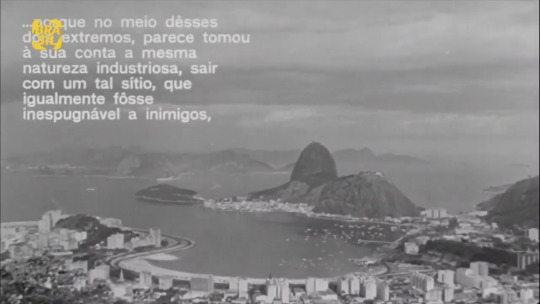
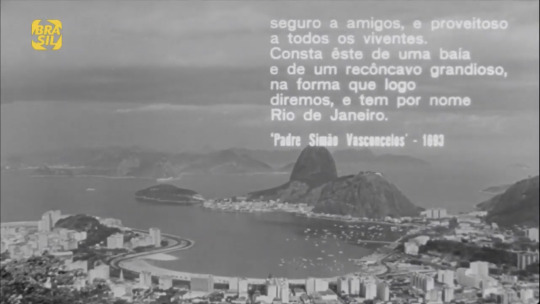
A Grande Cidade (1966, Carlos Diegues)
0 notes
Photo








Cinema Novo (2016)
15 notes
·
View notes
Photo

Jean-Pierre Léaud in Os Herdeiros directed by Carlos Diegues, 1970
269 notes
·
View notes
Photo






Carlos Diegues, A Grande Cidade / The Big City, Rio de Janeiro, Brasil, 1966
https://en.wikipedia.org/wiki/Carlos_Diegues
Watch here (with subtitles) :
https://www.youtube.com/watch?v=XV9N0qj03MU
1 note
·
View note